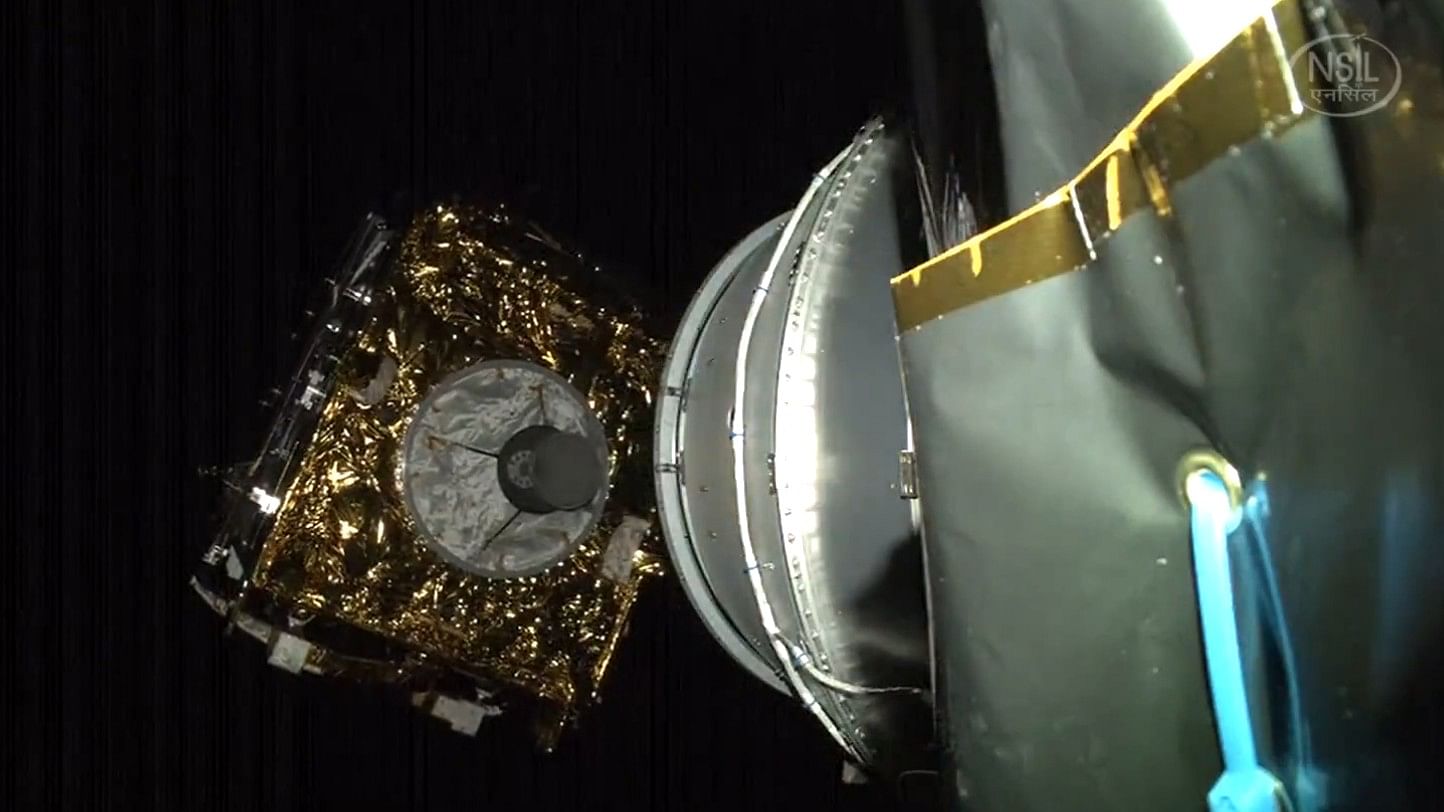
GSAT-N2 deployment
Credit: X/@SpaceX
Bengaluru: ISRO satellite GSAT-20 was launched at 12.01 am on November 19 by Elon Musk's SpaceX in launch vehicle Falcon 9 from Space Launch Complex 40 at Cape Canaveral, Florida. This is the first collaboration between ISRO and SpaceX.
ISRO does not have any launch vehicle that can carry the 4,700 kg payload of GSAT-20. They had earlier used launch vehicles made by the French-based company Arainespace SA for heavy payloads. ISRO’s GSLV-III has the capacity to launch payloads up to 4,000 kg into geosynchronous transfer orbit (GTO).
Falcon 9 successfully placed GSAT-20 in a GTO orbit in the early hours of Monday morning. GSAT-20 was launched by New Space India Limited (NSIL), a Government of India company and the commercial arm of ISRO under the Department of Space.
GSAT-20, also called GSAT-N2. has been launched to offer cost-effective Ka band (part of microwave spectrum), high throughput satellite (HTS) capacity (up to 48 gpbs) primarily for meeting broadband needs, as well as in-flight maritime communication and cellular backhaul service needs.
The satellite offers 32 beams covering all of India, including Andaman and Nicobar and the Lakshadweep Islands. The satellite has been specifically designed to meet the demanding service needs of remote regions of India.
The NSIL reported that after the successful launch, ISRO's Master Control Facility at Hassan, Karnataka took control of the satellite and initial data received indicated good health of the satellite.
Falcon 9 is a partially reusable launch vehicle that can launch up to 5,500 kg and can be safely reused by making it land on a drone ship, an autonomous ocean-going barge that facilitates the recovery of the boosters of the launch vehicles. “The successful launch of GSAT-N2 by NSIL marks the beginning of the commercially competitive satellite capacity solutions being available to Indian VSAT (a kind of small-scale antenna) operators for meeting the country’s Broadband and IFMC service needs,” Radhakrishnan D, Chairman and Managing Director of NSIL said in a statement.
This mission is part of “demand-driven mode” of the NSIL which aims to fulfil the service needs of the user. NSIL successfully undertook its 1st demand-driven satellite mission, GSAT-24 during June 2022, wherein the capacity onboard the satellite was fully secured by TataPlay.